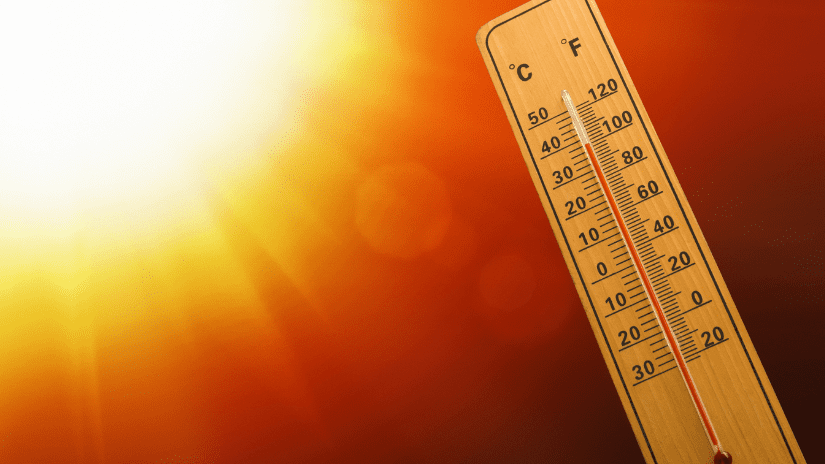
As Wisconsin enters the summer months, it is important for people to pay close attention to their health and well-being with increased temperatures. To encourage everyone to take steps to prevent heat-related illnesses or deaths, Gov. Tony Evers declared June 5 as Heat Awareness Day in Wisconsin.
“While higher temperatures can impact our health, heat-related illnesses and deaths are preventable,” said Wisconsin Emergency Management Administrator Greg Engle. “During these hotter months of the year, it’s important to stay alert to weather conditions and take the steps necessary to keep yourself and your families and pets safe.”
High temperatures and humidity can quickly cause heat-related illnesses, such as heat stroke or heat exhaustion. The National Weather Service (NWS) issues advisories for high heat to help warn people of potential dangers.
“We’re always on the lookout for the long duration heat waves,” said NWS Milwaukee Warning Coordination Meteorologist Tim Halbach. “The longer that a heat wave goes on, the more likely it is that we’ll see impacts. Stay aware of forecasts for these longer duration heat waves and whether the NWS has issued any heat related advisories or warnings.”
People of all ages are at risk of getting heat-related illnesses. In 2023, 10 heat-related deaths occurred in Wisconsin, according to preliminary data from the Wisconsin Department of Health Services (DHS). More than 750 Wisconsinites also visited emergency rooms for heat-related illnesses last year.
“Last year was Wisconsin’s fourth warmest, yet another sign that our changing climate is bringing more dangerous heat waves that can harm our health,” said State Health Officer and DHS Division of Public Health Administrator Paula Tran. “That’s why it’s so important for everyone to know the signs of heat illnesses and steps they can take to cool off on hot days.”
During heat waves, DHS urges people to watch for early signs of heat illnesses like dizziness, headaches, fatigue, and muscle cramps — whether they’re at home, working outdoors or participating in outdoor activities.
While extreme heat can put everyone at risk of heat illnesses, the heat health risks are greatest for older adults, infants and children, people who are pregnant, people who work in the heat, people who exercise in the heat, people without a home, and people with chronic conditions such as breathing difficulties, heart conditions, mental health conditions, diabetes, kidney diseases, and obesity.
ReadyWisconsin and DHS recommend following these tips to beat the heat and stay safe during heat waves:
- Remain inside air-conditioned buildings as much as possible during the hottest parts of the day. Call 2-1-1 to find an accessible cool place near you.
- If you don’t have air conditioning or a basement, take a cool shower, soak your feet in cold water, or place a cool, wet cloth on your forehead. Keep your windows covered to avoid direct sunlight.
- Drink plenty of fluids and avoid alcohol, caffeinated or high-sugar drinks. Don’t wait until you’re thirsty to drink.
- Never leave a child or pet unattended inside a parked car. On an 80° F day, temperatures in a vehicle parked in direct sunlight can climb almost 20 degrees in just 10 minutes.
- Limit your pet’s time outdoors and make sure they have access to fresh drinking water.
- Seek medical attention right away if you develop heat stroke symptoms such as confusion, rapid breathing and heartbeat, body temperature above 104°F, or nausea and vomiting.
- Check in with loved ones and neighbors during heat waves, especially if they last a few days. Check for signs of heat illness and make sure they are cool and hydrated.
During periods of extreme heat, each NWS Forecast Office uses multiple tools to assess the
potential for heat-related health issues. One of those tools is the Heat Index which measures how
hot it really feels when relative humidity is factored in with the actual air temperature. The NWS
uses these tools to issue the following heat-related alerts as conditions warrant.
- Excessive Heat Warning: An excessive heat warning is issued when the maximum heat index temperature is expected to be 105°F or higher and not go below 75°F for a Heat Index the morning before or after. Check in with loved ones and neighbors during heat waves, especially if they last a few days. If the maximum heat index will be between 100-104°F for four days in a row, a warning will be issued.
- Excessive Heat Watches: Heat watches are issued when conditions are favorable for an
excessive heat event within the next one to three days. - Heat Advisory: A heat advisory is issued when the heat index temperature is expected to be 100°F or higher. If the maximum heat index will be between 95-99°F for four days in a row, then an advisory will also be issued.
- Outlooks: The outlooks are issued when the potential exists for an excessive heat event in the next three to seven days.
Find more tips on preparing for heat waves at https://readywisconsin.wi.gov/be-informed/extreme-heat/ or preventing heat-related illnesses at https://www.dhs.wisconsin.gov/climate/weather/heatillness.htm.
Learn more about heat safety information and forecast tools at https://www.weather.gov/safety/heat.
To view a copy of Governor Tony Evers’ proclamation head to https://readywisconsin.wi.gov/wp-content/uploads/Be_Informed/PDF/060524_Proclamation_Heat%20Awareness%20Day.pdf For more tips on emergency preparedness, head to http://readywisconsin.wi.gov. You can also follow ReadyWisconsin on Facebook, X, and Instagram.

